If only such a bubble of foolish hype did not follow Wayne McGregor wherever he goes, such bloated talk of reinventing dance, injecting it with brains, and infusing it with new chemical sensitivities and practically supernatural powers, one would be able to look at what his contribution to theatre is more clearly. He is not the Heston Blumenthal of dance. Primarily McGregor can be thanked for bringing some ravishing and expensive lighting design to dance, under which his insectoid dancers twitch and scurry like moths and crane flies attracted to the flame. FAR, his new work premiered last night in Sadler’s Wells, is primarily a wonderful lightshow, with an hour of almost intolerably noisesome sound and quite interesting dance attached.
The digital design team is called rAndom International, which appears to be coincidental. Random, the dance troupe, is McGregor’s “street” line, as opposed to his couture work for the Royal Ballet, where one can see much more clearly McGregor’s own beautiful qualities as a dancer a decade ago, the serpentine slithers and upward ripples which seem to flood equally from the sole of the foot to the crown of the head, true ribbons of motion.
And at first he makes a bid for old-fashioned human emotion, with the stage archaically occupied by four dancers carrying flaming torches, by whose soft fiery light a couple engage in a velvety contra-duet, pulling constantly away from each other while the honey-voiced Cecilia Bartoli sings a Vivaldi lament. For these few moments, intelligence, emotion and technique fit together.
But then McGregor must needs get back to the chilly frontier where his reputation is, the Vivaldi is flooded by electronica from Ben Frost, one of those electronic lab rats whose assemblage rumbles, nails on blackboards, road drills, all descanted by closely miked sucking noises, remind one of a new digital retread of the old BBC special-effects records. Needless to say, the dial is turned up to 11. Sadler’s Wells is evidently positioning itself as the theatre for the hearing-impaired, where those under-forties whose eardrums have been half destroyed by headphones can go to have the rest of it ruined by shattering decibels. Three people by me in the cloakroom after this mere hour were going home as fast as they could to get aspirin. Hollow laughter to see a feature in The Independent where this work is claimed as a cure for depression - a cause of it, more like.
Then there is the ineffably silly programme note and interview in which McGregor spouts patronising nonsense about dance up until him being so yesterday and uninformed - quote: “In classical ballet and modern dance, technique is still focused on physical training to the point of perfection. People concern themselves with virtuosity and controlling the body; the mind is essentially ignored. I completely reject this separation of mind and body. Fortunately science is increasingly demonstrating how absurd this split is...” And how absurd a statement that is, as if (a) the greatest dance of any era has not been precisely that which has so perfected technique that it reaches past it to expressive, intelligent and imaginative ends (likewise the scales and practice on a violin), and (b) McGregor’s own dancers were not themselves products of the highest pursuit of technical virtuosity.
With words shouting, noise deafening and light blinding, it’s hard to see the better things in FAR. McGregor likes above all to show off his dancers’ amazingly tensile articulation - but it’s more of a dance-chatter, a lexicon of words in dance rather than a sentence of through-motion: ripple, flicker, twitch, patter, crumple. In places it’s almost like a bare-skin version of street dance’s popping and locking.
I can’t help following McGregor’s bidding and making comparisons between his and others’ work which he dismisses: while this is strenuous it’s mainly very cold. It declares that dancers are not of us, but a superior life form, to be drained of likeness to us, rather than to communicate of our shared humanity. I find it spindly. Street dance has more character and tension, flamenco more challenging tempo variations, ballet has far more range of speed, from stillness to flying.
At other times, blessedly, the dancers briefly drop into something innocent, sweet, natural: playground rushings, pushings, interactions where for a moment the convolutions clear and the individual character of performers blazes as well as the rubberiness of their joints; the sensuality of one, the stroppiness of another. But then there is the melodrama of the finish, dance to the death between a couple, reflecting the opening pair. It doesn’t gel. I remain more interested in his Random work than in his ballets, but still it’s verbiage, not language.
All the while the digital wall behind, will-o’-the-wisps chase across a grid of pinpoint lights, flickering, blaring, making marvellous patterns and tricks of shadows, while Lucy Carter’s illumination of the dancers bathes them in warmth here, or bleaches them of colour like cadavers there, or turns it down so low that you barely see them at all. Give the lighting designers the name above the bill, I’d say. And I’d beg Sadler’s Wells to monitor their decibels, because this amplification issue is verging on sensory torture.

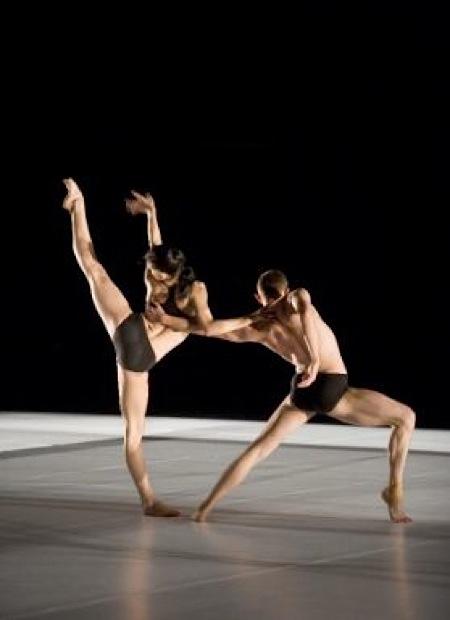



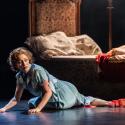


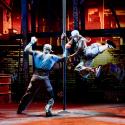


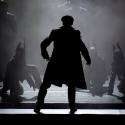
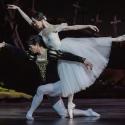

Add comment